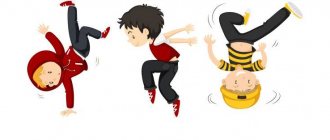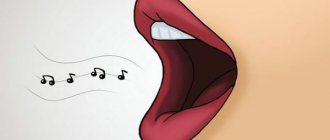To ensure that memory and thinking do not weaken, they need training. For good brain training, it is not the complexity that is important, but the variety of tasks - the more unusual the experience, the more flexible it becomes. We have selected 10 exercises that strengthen memory, improve alertness, increase concentration and productivity.
Working out doesn't have to be a grueling test of endurance. It is important not to overload yourself so as not to get a negative result. Exercise two to three times a day for 15-20 minutes, alternating methods.
Use your non-dominant hand (right-handed - left, left-handed - right)
Brush your teeth, type on your smartphone, or take your wallet out of your pocket with the wrong hand.
A separate exercise will be to look for options where you can apply this practice: holding a spoon or fork in your hand, fastening buttons or typing a code on an intercom.
How it works: the brain will have to use those parts of the motor cortex that were previously “asleep”. This will increase mental and motor tone.
Exercises for attention and memory for schoolchildren
To prevent a teenager’s memory from being overloaded, he needs to develop attention. Exercises for developing attention and memory in schoolchildren are, in principle, performed daily. Actually, studying a new variety of material, repeated in the evening, in homework.
Maps for geography, diagrams for mathematics, drawings for geometry, drawings and photographs for botany, laboratory work in physics help supplement memory. This is how auditory, visual and motor memory works during laboratory work.
By the way, when preparing for exams, a short entry in the form of a cheat sheet is very helpful. It highlights the main points and divides the information into easy-to-remember parts. It's best not to take the "spur" with you to the exam, but writing it up and rereading it before the exam will definitely help you remember the information.
Important! When a student keeps neat notes in a notebook, highlights important thoughts with a colored pencil, and makes neat drawings, this creates a clear and stable image in the memory.
A student should not be overtired. After half an hour of doing homework, you should get up and do exercises for 5-15 minutes and drink a glass of juice, eat an apple, and ventilate the room.
Get a new experience
Try blindfolding and walking around the apartment, taking a shower or vacuuming the room. Such an experiment deprives one of the main senses - vision. You will have to remember the location of objects and the actions performed with them earlier. This trains the ability to retrieve already acquired information and spatial memory.
Put yourself in unfamiliar situations and try to learn new things regularly. Master the Braille system (a font for the visually impaired), learn to juggle, walk on your hands, or simply solve puzzles.
How it works: low-active areas of the brain begin to work, unused neural connections are restored. The mind remains constantly “warmed up”. As a result, you “turn on” faster, unusual thoughts and extraordinary solutions appear.
Advice
My family and I play the board game “Baramelka”. It develops reaction speed and logical thinking. The principle of the game is to grab the item named by the leader before the other participant. True, there is a serious catch, which you will learn about in the process. I'll keep the intrigue. I recommend the game to adults and children; it’s an excellent simulator for training cognitive functions.
Try to guess the rules: this also develops imagination
Go to work/school/meeting friends along an unfamiliar route
It is not necessary to make this exercise a topographic test. Walk from the public transport stop to the office along a parallel street. You won't get lost, but everything around you will be new. The brain will not miss the latest information - it will definitely turn on.
How it works: The principles from the previous exercises apply. On an unfamiliar route, the brain is forced to control the path in order to avoid mistakes - this trains concentration and speed of analysis of external conditions. This practice also increases the hippocampus. This is one of the key structures needed for memorization. People with a weak hippocampus remember long-learned information, but have difficulty retaining new information.
Training memory and attention in adults - the best exercises
Classes to improve memory in adults are not such a difficult task. If you wish, you don’t have to waste extra time on training attention in adults. Listen carefully to your friend, trying to remember the color of his shirt, shoes, coat, eyes, hair. After you part, try to remember these colors.
While walking down the street, try to remember the numbers of buses or cars passing by. If you are stuck in a traffic jam or have a long ride on a trolleybus, solve crosswords and scanwords. They perfectly train memory and attention.
Memorize three words of a foreign language every day. Learn poetry, read at least 20 pages a day. These simple ways train the brain and memory of busy adults.
Try not to overwork and eat right. Fresh fruits and vegetables, greens, a lean diet, enough calories, a varied menu are necessary to nourish brain cells.
Answer common questions creatively
“How are you?”, “What’s new?”, “How was your weekend?” — we answer such questions not always in the same way, but, as a rule, in a rather formulaic manner. Instead, start thinking of interesting phrases to answer. This approach will develop creative thinking and add variety to routine conversations. A new joke (even if it’s not explosive), an old joke, an entertaining story, an original play on words - all this will make the day better. Prepare in advance.
How it works: the exercise pulls the brain out of “autopilot” mode and activates the rational and creative departments. Trains brainstorming skills and searching for non-standard solutions.
Neuroscience for the development of thinking
Neurobics also offers a lot of interesting things for older people. Scanword puzzles, crosswords, playing chess, puzzles - will bring benefit and variety to the life of an elderly person.
An elderly person can place objects under their hands, then ask them to describe this object by touch. It will be interesting every time to come up with new recipes from ordinary products and set the table.
In a couple of months, mental abilities will begin to improve even in people who have never stopped repeating that they have a bad memory.
Neurogymnastics for everyone on concentration:
- Select an object, for example a wolf. Think about it for a few minutes. Soon your thoughts will begin to get confused. Time yourself and force yourself to think about the wolf for 60 seconds. Then complicate the task by thinking about the animal and comb your hair.
- When talking on the phone, draw neat tic-tac-toe without interrupting the conversation.
- When doing homework, count numbers from 1,2,3, etc., then back.
- When choosing products in a store, mentally count how many letters are in a word.
- Mentally draw letters while doing gardening at the same time.
- Work with the Schulte table. Draw a table. Then find the numbers in ascending, then descending order. Speed up your work with the table.
You can find apps and exercise machines that will help you develop your brain.
Read colorful text
Look at the picture. Words denoting colors are written in different colors. Try looking at a word to pronounce not the word itself, but the color in which it is written. This is not easy, because we have different hemispheres responsible for the perception of colors and words. This exercise weans the brain from working superficially. Forces him to process all the information based on data from different departments.
How it works: The exercise forces the hemispheres to work together and creates new neural connections. Practice on different pictures. You can compose them yourself or find them on the Internet. It is considered a good prevention of Alzheimer's disease.
general information
Thanks to the brain, humanity survived in the process of evolution, because you had to be smarter than the victim in order not to die of hunger. I had to remember the way to the hidden caves where the family lived after a long chase of some prey. We had to stay warm during the Ice Age, survive during droughts... Because of all these difficulties, modern man is exactly the way he is. He is able to speak several languages, perform complex operations and invent robots.
But as soon as it stops, stops using the cells of its nucleus, it will begin to degrade. And why this should be scary, you can find out from this article.
This happens because cells that are not used begin to “wither.” There is no proper blood circulation and neurons stop exchanging information with other cells. It is impossible to revive this process, so it is better to take care to prevent such a situation, and the simplest thing you can start with is solving puzzles and riddles.
Look for numbers using the Schulte table
The Schulte table is a table of numbers or letters. The task is to look for a symbol on the field from low to high. In the complicated version, the matrix cells have different colors, sizes and shapes.
During the exercise, you need to look at the center of the picture, and not move your eyes to where the desired symbol is located. So, the exercise will best develop peripheral vision and attentiveness. Ready-made tables are available on the intellectual development portal Sepia.ru.
How it works: joint mental and visual activity is trained. Making decisions under time pressure (limited time), attentiveness. This has nothing to do with memorization, but it does help you think faster. A person begins to more effectively assimilate external data and compare them with what is in memory.
Use your hands at the same time, but in different ways
Try simultaneously drawing a triangle with your left hand and a circle with your right. If you are not ambidextrous (a person who is good with both hands) this will be difficult. But over time, you will begin to cope better.
Asymmetric exercises for the mind are easy to come up with on your own. Here are some options:
- Show the “okay” gesture with your left hand, and “peace” with your right hand (Churchill’s signature two fingers). Count to five and at the same time change: “peace” to the left, “okay” to the right.
- With one hand, stroke your head in a circular motion, and with the other, swing it up and down, as if you were dunking a basketball.
- Stretch one arm forward, bend the other at the elbow and raise your thumb (as if you were giving a like). Count to five, change.
How it works: The exercise engages both hemispheres and triggers the creation of new neural circuits. This will increase multitasking and simplify the search for solutions in practice.
Neuroscience has taken over the world
Neuropsychologist Svetlana Novikova has prepared 10 exercises that many consider a magic wand. They will help develop attention, memory, speech, and increase self-control.
SIP of water
Charging your brain starts with a glass of water. Our thinking organ needs water to transmit nerve impulses. His reaction slows down if a person drinks little water.
Steps in place
Next comes the activation of the thinking organ for logical thinking and counting. Start walking in place, raising your knees high. At the same time, pull your elbow towards your knee. Walk quickly at first and then slow down.
Elbow to knee
Stand up straight. Pull the opposite shoulder towards the knee, first quickly, then slowly. The slower the movement, the better the head thinks.
Lazy Eights
Bend your arm at the elbow, put it forward, keep your thumb at eye level. Move your finger to draw a figure eight, starting from the center of your field of view. The finger goes up, then counterclockwise down and back to the center. Then do the same, but clockwise. Do it 3 times.
After this, clasp your hands and raise your thumbs up. Draw a figure eight with both hands.
Belly breathing
Breathing from the belly will help fill the brain with oxygen. Place your hand on your stomach. Exhale the air in short exhalations. Next comes a deep breath. When you exhale again, bend your back so that air flows into the lungs.
Funny monkeys
If your child doesn't read or write well, do this exercise. With your left hand, grab the tip of your nose, and with your right hand, grab the ear on the opposite side. Now we change hands by clapping our hands.
Crab
The child, leaning on his arms and legs, stands on the floor. Then he walks on all fours in different directions, like a crab.
Owl
The owl exercise will relieve tension in the neck and shoulder muscles. You need to grab and then tightly squeeze the muscles of the right shoulder with your left hand. Turn your head, look back over your shoulder.
Do it with the other hand. Taking a deep breath, roll your shoulders. Lower your chin to your chest. Then take a deep breath, relaxing your muscles.
Fist-rib-palm
Lower onto the table in turn: fist-rib-palm.
Glider
Sit with your legs crossed at the ankles. Bend forward. Slowly lower your arms down and exhale. Straighten up, raise your arms - inhale. You can lean in different directions, simulating the flight of a glider.
Do the moves with your child before school. You will be surprised by the effect of simple charging.
Connect words
Take a few words from a book or magazine, or better yet from different sources. Make a meaningful sentence or short story out of them. This technique will teach you to look for connections between things that initially seem far from each other.
How it works: the left (creative) hemisphere is trained, the ability to search for non-obvious connections and unusual solutions develops. This is almost a mandatory exercise for people whose specialty requires creativity.
Shall we practice?
So let's start with something simpler. Read the list of items carefully (almost all vital things!). And remember. Do you remember? Scroll down and...
... and find those items that have been replaced. Please note that the order of items has also changed.
Learn a foreign language (or several)
In 2012, scientists from Lund University (Sweden) found that when learning languages, the brain regions increase in volume. And in 2010, a group of scientists from Canada found that people who speak two languages develop Alzheimer's syndrome less often and several years later than the statistical average.
How it works: language is a complex system of rules, logical connections and exceptions. You won't be able to cram it. It is necessary to compare parts of speech, take into account the context and private rules that are not in the native language. Combine visual and auditory memory. This will keep your brain in good shape, increase the volume of the hippocampus and help you acquire a useful professional skill.
How to keep a clear mind
Neurobics is a brain exercise that makes it possible to develop mental abilities and maintain a clear mind for a long time.
If the brain is not developed, then it slowly begins to degrade. The fundamentals of neuroscience were developed by Professor Lawrence Katz. American scientists have conducted studies that refute the claim that nerve cells die and are no longer restored.
Lawrence Katz, along with other scientists, proved that dendrites are depleted in humans.
Dendrites are processes of nerve cells that receive impulses from neurons.
If these processes become depleted, the nerve endings lose their ability to conduct nerve signals. As a result of this process, a decrease in a person’s mental abilities appears.
To maintain dendrites in working condition, it is necessary to perform exercises that will keep brain cells in good shape.
When exercising, neurons begin to grow new processes, thereby developing the neural network of the brain. This can happen at any age. A person’s task is to help them develop.
If a person does not want to think, but is looking for ready-made solutions, then the cells seem to freeze. Neuroscience is ready to awaken your thoughts and help you improve.
This gymnastics is not boring, even fun. She is able to paint your everyday life with new colors.
By performing ordinary, often boring actions in a new way, you will involve different senses in the training so much that the brain will begin to produce new nerve cells.
Brain training does not require any special preparation from you. You can even exercise while walking or during dinner. Once you become familiar with the principles of neurobics, you will be able to create a training program yourself using “neural practices” for the brain.
Neurobics makes it possible to engage different senses. Having involved 2 organs, one will have to perform the usual actions, and the other will have to perform a new “reading”.
In neurobics, you can perform several actions at once: combing your hair, brushing your teeth, putting on clothes, closing your eyes. You can walk down the street while simultaneously counting how many people have passed you wearing blue clothes.
Play sports
During sports exercises, blood saturated with useful substances enters the brain faster and in greater volume. Therefore, physical activity increases intelligence and critical thinking, delays the onset of dementia in old age, and prevents depression, Alzheimer's and Parkinson's diseases.
Exercise affects the head in different ways:
- Aerobic exercise stimulates the production of hormones necessary for the formation of new neurons. That is, they will not allow memory to weaken, preventing dementia and Alzheimer's disease.
- Strength exercises improve spatial and verbal memory.
Comprehensive training will combine the benefits. The brain will receive a rich neurobiological cocktail. This will encourage him and help him organize the new information.
Neuroscience for the brain will help raise a genius
Neurobics is very useful for restless children who fail at school. And it will help the student become a better specialist, a successful person at work and in his personal life.
Do the entire set of exercises outlined above with your children, introducing playful moments into the child’s usual life.
For example, after changing the route to kindergarten or school, ask your child to find the way himself and tell him what you should pass by.
And brushing his teeth with the other hand will seem like an unusual adventure to him, as will walking around the room with his eyes closed.
Make different crafts with your child. Turn every day into a new, exciting journey around the world.










